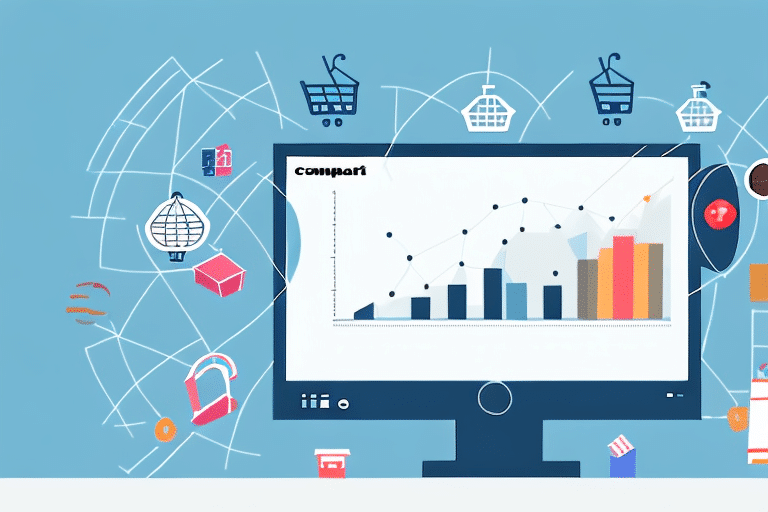Understanding Gross Profit in E-Commerce
Gross profit is a fundamental metric that measures the revenue generated by your e-commerce business after subtracting the direct costs associated with producing your products or services. These direct costs typically include materials, labor, and manufacturing expenses. Calculating gross profit provides insight into the profitability of individual products or services and serves as a foundation for making informed pricing, production, and financial planning decisions.
Importance of Gross Profit: Unlike net profit, which accounts for all operating expenses, gross profit focuses solely on the efficiency of production and sales processes. It helps e-commerce businesses identify which products are performing well and which may require cost reduction or pricing adjustments. By regularly monitoring gross profit, businesses can ensure they maintain healthy margins and make strategic decisions that drive long-term success.
Calculating Gross Profit and Key Metrics
To calculate gross profit, subtract the direct costs of producing your products or services from your total revenue:
Gross Profit = Total Revenue - Cost of Goods Sold (COGS)For example, if your e-commerce store generates $150,000 in revenue and the COGS is $90,000, your gross profit would be $60,000.
Key Metrics to Monitor:
- Gross Profit Margin: This metric expresses gross profit as a percentage of total revenue. It is calculated as (Gross Profit / Total Revenue) x 100. A higher margin indicates better efficiency in production and sales.
- Customer Acquisition Cost (CAC): The total cost of acquiring a new customer, including marketing and advertising expenses.
- Customer Lifetime Value (CLV): The total revenue a customer is expected to generate over their entire relationship with your business.
Monitoring these metrics alongside gross profit provides a comprehensive view of your e-commerce financial health. According to a Statista report, global e-commerce sales are projected to reach $6.54 trillion by 2023, underscoring the importance of robust financial metrics in a competitive market.
Strategies to Improve Gross Profit Margins
Optimizing gross profit margins involves both increasing revenue and reducing direct costs. Here are some effective strategies:
1. Optimize Pricing Strategy
Adjusting your pricing based on market demand, competitor analysis, and cost fluctuations can significantly impact your gross profit. Implementing dynamic pricing tools can help automate and optimize this process.
2. Reduce Cost of Goods Sold (COGS)
Negotiating better terms with suppliers, bulk purchasing, and finding cost-effective materials can lower your COGS. Streamlining your supply chain operations also reduces inefficiencies and costs.
3. Improve Inventory Management
Effective inventory management prevents overstocking and stockouts, reducing waste and associated costs. Tools like Shopify's inventory management system can help maintain optimal stock levels.
4. Enhance Operational Efficiency
Automating repetitive tasks, optimizing order fulfillment processes, and investing in efficient technology can lower labor costs and improve productivity.
Overcoming Challenges in Measuring Gross Profit
Accurately measuring gross profit can be challenging, especially for businesses with a wide range of products or fluctuating costs. Common challenges include:
1. Accurate Cost Tracking
Properly accounting for all direct costs is essential. Utilizing accounting software like QuickBooks can streamline cost tracking and ensure accuracy.
2. Allocating Indirect Costs
While gross profit focuses on direct costs, understanding and managing indirect costs is also important for overall profitability. Implementing cost allocation methods such as activity-based costing can provide more accurate financial insights.
3. Keeping Up with Market Changes
Market conditions can rapidly change, affecting both pricing and costs. Regularly updating your pricing strategies and cost structures based on current market data is crucial.
Addressing these challenges with robust financial tools and practices ensures that your gross profit calculations remain accurate and actionable.
Utilizing Gross Profit Data for Informed Business Decisions
Gross profit data is instrumental in driving strategic business decisions. Here's how you can leverage this information:
1. Pricing Strategy Optimization
Analyze gross profit margins at different price points to identify the optimal pricing that maximizes profitability while remaining competitive. Tools like price optimization software can aid in this process.
2. Product Line Evaluation
Assess the profitability of each product line to determine which products to promote, discontinue, or modify. Focus on high-margin products to boost overall profitability.
3. Financial Forecasting and Budgeting
Use gross profit trends to forecast future revenue and set realistic financial goals. This aids in budgeting and allocating resources effectively.
4. Strategic Investments
Allocate resources towards areas that offer the highest returns based on gross profit data, such as expanding high-profit product lines or investing in marketing strategies that drive profitable sales.
Implementing data-driven decision-making processes ensures that your business strategies are aligned with financial performance, fostering sustainable growth.
Comparing Gross Profit with Industry Benchmarks
Benchmarking your gross profit against industry standards provides valuable insights into your business's performance relative to competitors. It helps identify areas for improvement and opportunities for growth.
For instance, according to the Bureau of Labor Statistics, the average gross profit margin in the retail e-commerce sector hovers around 40%. If your business's margin is significantly lower, it may indicate the need for cost reductions or pricing adjustments.
Additionally, benchmarking can highlight best practices adopted by leading companies in your industry, allowing you to implement similar strategies to enhance your own profitability.
Regularly comparing your gross profit with industry benchmarks ensures that your business remains competitive and identifies pathways to improve financial performance.
The Relationship Between Gross Profit and Net Income
Understanding the distinction between gross profit and net income is crucial for comprehensive financial analysis:
- Gross Profit: Revenue minus direct costs (COGS). It indicates the efficiency of production and sales processes.
- Net Income: Gross profit minus all other operating expenses, including indirect costs like rent, utilities, and salaries. It represents the overall profitability of the business.
A business may have a high gross profit but a low net income if indirect costs are disproportionately high. It's essential to manage both direct and indirect costs to ensure overall profitability.
For example, a study by Harvard Business Review emphasizes the importance of balancing gross and net profit margins to maintain financial health and operational sustainability.
Monitoring and Adjusting Gross Profit for Sustainable Growth
Consistently monitoring your gross profit margin allows you to identify trends, respond to market changes, and make strategic adjustments. Here are key practices for maintaining and improving your gross profit over time:
1. Regular Financial Reviews
Conduct monthly or quarterly financial reviews to assess gross profit performance. This helps in identifying seasonal trends and making timely adjustments.
2. Implementing Data Analytics
Use data analytics tools to gain deeper insights into sales performance, cost fluctuations, and market trends. Platforms like Tableau can provide comprehensive data visualization and analysis capabilities.
3. Continuous Process Improvement
Adopt a mindset of continuous improvement by regularly evaluating and optimizing your production, supply chain, and sales processes to enhance efficiency and reduce costs.
4. Strategic Pricing Adjustments
Respond to market dynamics by adjusting prices based on demand, competition, and cost changes to maintain or improve profit margins.
By actively monitoring and adjusting your strategies based on gross profit data, your e-commerce business can achieve sustainable growth and long-term success.






















